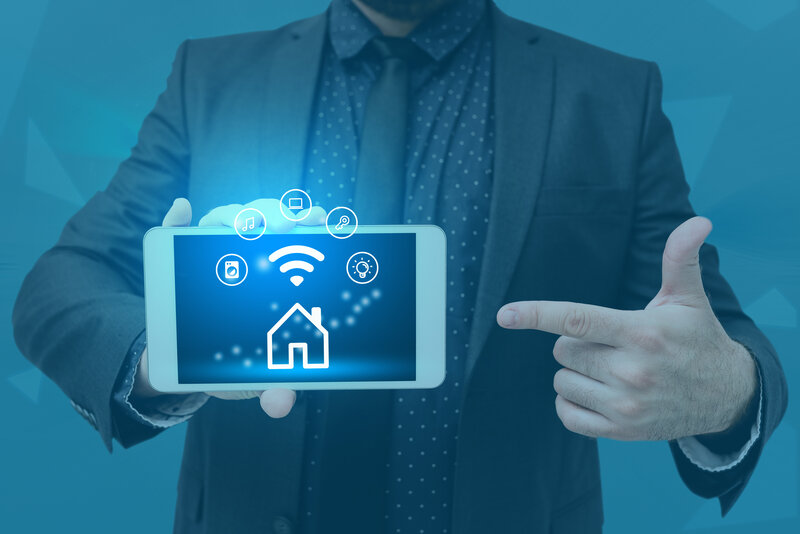
Home automation is all the rage these days, and with so many perks, it’s easy to see why. Smart devices with automation capabilities can save you time, help you slash the cost of your energy bills, and make your life much easier overall.
If you’ve dismissed smart home technology because you think it’s not for you, think again. Smart home systems make sense for anyone who wants to save energy, money, and time.
8 Common Home Automation Myths
Below, we dispel the top home automation myths and explain why smart home tech is a fantastic solution compared to conventional gadgets.
Home automation is unsecured
A lack of security is a common fear that many people have about smart technology. Worried parents believe that someone shady could hack into their security cameras and spy on their children over the internet connection. People who work from home fret that a hacker could take remote control of their smart device, causing a disastrous data breach that costs their company millions of dollars.
However, hackers will find breaking into your internet-connected devices a daunting task as long as you use careful planning and take a few precautions. These extra precautions for smart home security systems include:
- Keeping your smart devices updated so they’re patched against the latest security breaches
- Connecting your smart home device to as few other compatible devices as necessary (the more networked devices you have, the bigger the risk of a breach)
- Using geofencing, which gives you complete control over when your devices are active (for instance, you can shut your smart devices off when you go to work)
- Keeping your router’s name private and changing the default Wi-Fi password
- Watching out for suspicious devices and booting them off your network
- Only allowing connections that you recognize to access the network
Smart homes are expensive
This is one of the most common home automation myths, but it couldn’t be further from the truth. It’s true that you can spend thousands by fully decking out your home with smart technology, but you’ll still find plenty of affordable home automation systems that can suit nearly any budget.
If you’re new to smart home automation, you don’t need to start off with pricey smart appliances, such as ovens and refrigerators. Instead of shelling out a fortune on smart entertainment systems and electrical appliances, you could spend a modest amount on a smart speaker, smart switch, or automated door locks.
Home automation systems are unattractive
If you’ve seen movies in which characters own fancy smart homes, you may think that all smart devices have a futuristic look that just doesn’t vibe with your own abode. The truth is that many home automation devices boast sleek and flexible designs that fit in with nearly any style, from rustic to modern and everything in between. Some of these devices are so discreet that you and your guests will barely notice them at all.
Smart home technology is confusing
People who aren’t very tech-savvy worry that they’ll have trouble using new technology and believe that learning how to control a connected home has a difficult learning curve. However, most of today’s smart home devices, such as motion sensors and door locks, are a snap to use. If you can use voice commands on your phone, you’ll have no trouble putting home automation to work for you.
Plus, many smart home-connected devices require very little input once you set them up. For instance, you can program your front doors to automatically unlock before you come home. You can also set smart control air conditioners to only run during the hottest parts of the day.
Home automation is only for new homes
Do you own an older house and think it’s not possible to install smart home technology where you live? This is another common misconception about smart home automation, and it’s simply not true.
You can install a home automation system in nearly any house, no matter how old, big, or small. A skilled installation professional will know how to retrofit your home with smart locks, speakers, appliances, and more. You’ll be amazed at the instant benefit you get from new devices like these.
Running smart home technology costs a lot of money
Doesn’t it take a ton of power to run all those smart home systems? No, it doesn’t! With the help of these devices, you’ll actually use comparatively less power than you once did.
For instance, standard air conditioners can run nonstop during the summer. Energy-efficient air conditioners for smart homes, though, can automatically turn on or off depending on when you’re home. You can control your air conditioner from your phone, too; it’s a piece of cake even if you’re not tech-savvy.
Smart home plugs are other devices that could potentially save you a bundle. These devices detect when devices aren’t in use and turn them off to save power. If you’ve got kids who constantly leave the TV on, installing plugs for smart homes can be a wise choice.
Exactly how much money will you save with these energy-efficient devices for smart homes? Your actual energy savings will vary, but on average, you can expect to slash your energy bills by about 25%.
Installing smart home devices is too complicated
The installation process for smart home technology can seem complex, which dissuades plenty of people from trying out these devices entirely. The fact is that installing devices for smart homes doesn’t have to involve ripping up your walls. Many companies know that users prefer plug-and-play simplicity, which is why they offer a good selection of easy-to-use devices with no complicated setup process.
Smart speakers are a good place to start if using such devices is relatively new territory for you. With these devices, you can use voice control to issue commands via assistants such as Apple’s Siri and Amazon Alexa.
My family won’t use smart home devices
It’s a big fear of many homeowners: They’ll install a bunch of devices for smart homes, only to see them collect dust when their family doesn’t use them. One of the best things about these devices, though, is that your family doesn’t necessarily need to interact with them to reap the benefits.
For example, some smart thermostats provide uniform cooling and heating throughout your home with barely any input required on your family’s end. Special locks for smart homes can recognize members of your family and automatically unlock the door when they approach. Smart security cameras can instantly dispatch emergency workers if a fire happens or someone breaks into your home.
Once your family realizes the potential of these devices, they won’t be able to keep their hands off of them. A few more possibilities include:
- Smart lawnmowers that charge themselves, recognize the boundaries of your yard and mow it for you
- Smart irrigation systems that water your plants based on their specific needs (some will fertilize plants for you too)
- Smart refrigerators that tell you when you’re running low on certain foods and need to stock up
- Smart ovens, which allow you to remotely set the temperature from your phone and alert you when your food is ready
Reach Out To Full Spectrum Technology Group To Start Your Home Automation Journey
Now that we’ve dispelled these common home automation myths, Full Spectrum Technology Group invites you to learn more about the power of home automation. We offer automated shades, lighting, home A/V systems, and much more.
To learn more about smart home solutions from Full Spectrum Technology Group, contact us at (925) 815-8324 today.
